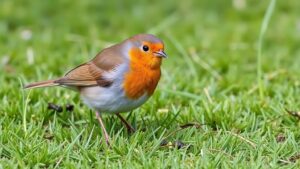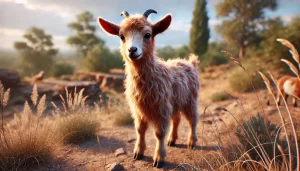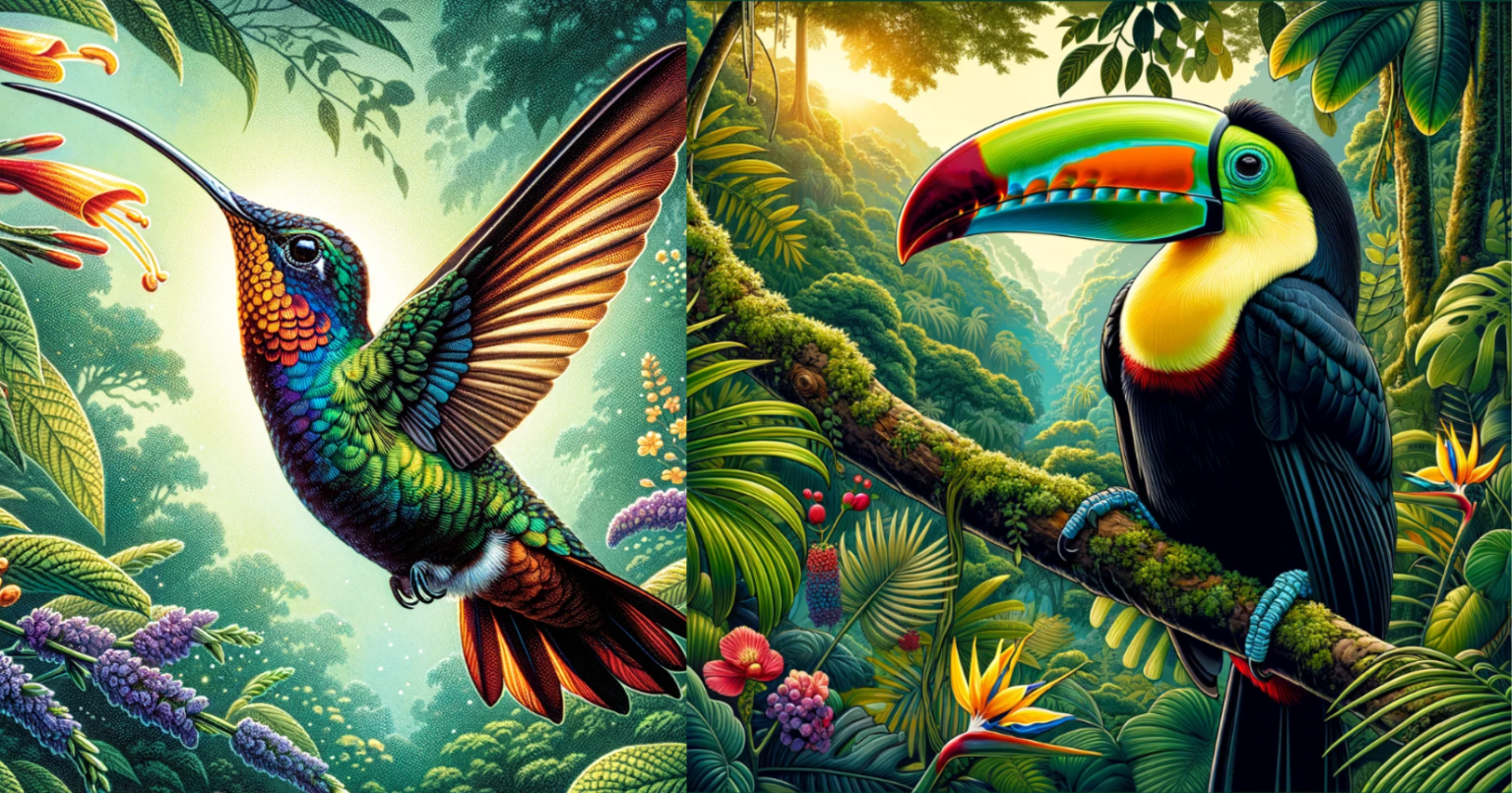In a world adorned with a kaleidoscope of avian wonders, birds with big beak stand out as nature’s masterpieces. Birds aren’t always dainty creatures! Some sport amazingly large beaks, each with a special purpose. Imagine a stork, its long bill built for fishing, or the incredible shoebill, whose beak resembles a giant clog. Then there’s the toucan, with its brightly colored beak so big it seems comical. And let’s not forget the pelican, that enormous beak complete with a pouch for scooping up a fishy feast.
Amongst these, the majestic Shoebill, resembling a stork in stature, reigns supreme with its impressive long bill. Similarly captivating is the vibrant Toucan, with its oversized, colorful beak a stark contrast to the elegant plumage of the American White Pelican. Each bird, from the formidable Sword-billed Hummingbird, agile despite its inches-long appendage, to the whimsical Toco Toucan, showcases a unique adaptation to its habitat.
Shoebills stand like statuesque sentinels in quieter marshlands, while Spoonbills use their namesake bills to sift through vegetation in search of aquatic delicacies. These specialized tools are also integral to intricate courtship rituals, demonstrating that size does more than intimidate; it captivates and ensures survival.
This article invites you to explore the intriguing lives of 8 birds boasting remarkable beaks. You’ll uncover the secrets behind their formidable facial features, from sheer size to their diverse roles in feeding, breeding, and beyond.
What is a bird with a big beak?
A bird with a big beak is a captivating creature, often evoking a sense of wonder due to the sheer size of its snout. Like the statuesque Shoebill Stork, these birds wield their long beaks with precision and purpose. From a list of 8 birds with prominent beaks to the 19 birds known for their sizable snouts, each species uses its large beak to forage, feed, and flourish within its environment.
Take the Rhinoceros Hornbill, with a beak robust enough to echo its calls through the forests of Central America, or the Australian Pelican, whose record-setting longest beak dips into wetland waters for a meal. The white plumage of this pelican contrasts with its large beak even more striking. Wading birds wade through marshes, their beaks acting like tools to pry food from the mud.
Bird beaks vary greatly, with some, like the Sword-billed Hummingbird, having a beak longer than its body, an adaptation unparalleled in the bird species. Whether using their beaks to construct a nest or engage in complex courtship displays, these birds with long beaks demonstrate nature’s creativity and efficiency.
8 Birds with Big Beak
Now below I want to explore the top 8 birds detail that can have the big beaks naturally. These 8 birds, each boasting a big beak, showcase nature’s incredible diversity and ingenuity. From the awe-inspiring Shoebill, with its shoe-shaped bill, to the colorful Toucan, known for its vibrant and oversized bill.
These birds utilize their unique beaks for feeding, courtship, and habitat navigation. This exploration offers a glimpse into the lives of these extraordinary birds, highlighting how their significant beaks play a pivotal role in their survival and behaviors. Join us as we delve into the world of birds with big beak, where each species tells a story of adaptation, beauty, and the wonders of nature.
1. Toco Toucan

The Toco Toucan, with its distinctive and vibrant beak, is not just a marvel of nature’s artistry but a symbol of the rich biodiversity found in South America’s tropical forests. This bird’s beak, a kaleidoscope of colors stretching up to 7.5 inches, is more than just a feeding tool. It’s a sophisticated thermal regulation system showcasing the intricate relationship between form and function in the animal kingdom.
- Value/Specification: The Toco Toucan is instantly recognizable by its large, colorful bill, a striking feature that is thought to amplify the bird’s ability to regulate its body temperature. This adaptation is a testament to the bird’s evolutionary ingenuity.
- Habitat: This magnificent bird calls the lush, dense canopies of South America’s tropical forests its home. These environments provide shelter and a playground for the Toco Toucan’s arboreal lifestyle.
- Diet: With a diet as diverse as its habitat, the Toco Toucan is omnivorous. Its diet includes:
- Fruits, which make up the bulk of its intake.
- Insects, offering vital protein.
- Small birds and their eggs, showcasing the toucan’s opportunistic feeding habits.
- Small animals, indicating the bird’s adaptability in sourcing food.
The Toco Toucan also uses its beak to probe for food in long corollas of flowers, an action that illustrates the bird’s role in its ecosystem, including pollination. During the breeding season, this adult bird showcases its beak in courtship displays, highlighting the multifunctionality of this feature beyond mere survival. Observing the Toco Toucan offers a glimpse into the complexity of ecological systems, where even a bird’s beak tells a story of adaptation, survival, and beauty.
2. Pelican

The pelican is a fascinating bird, celebrated for its distinctive oversized beak and expansive throat pouch, which are pivotal for survival. With a bill that can stretch up to 18 inches long, this extraordinary bird is a master at catching fish, showcasing a perfect blend of nature’s design and functionality. The pelican’s beak has a hook at the tip for gripping slippery prey. A large pouch capable of holding up to 3 gallons of water makes it one of the most efficient fishers among birds.
- Value/Specification: The pelican’s long curved beak and large throat pouch are not just tools for feeding but also serve to cool their eggs. This unique adaptation underlines the pelican’s special place in the avian world, where the longest beak belongs not to a predator but to a peaceful fisher.
- Habitat: Pelicans are found in coastal areas and inland waters worldwide, from bustling shores to tranquil lakes, adapting seamlessly to their surroundings.
- Diet: Their diet mainly consists of:
- Fish, which they skillfully scoop with their beak through the water.
- Amphibians and crustaceans, showcasing their versatility in diet.
Pelicans often work together to herd fish into shallow waters, demonstrating remarkable cooperation. They dip their long beaks into the water, scooping up fish alongside gallons of water, which they then strain out, leaving only the large prey behind. This bird, with its white plumage accented with black, stands still or glides over water, a sight that captivates and intrigues.
From the green-headed pelicans of Central Africa to the large wading species found worldwide, each pelican species uses its long beak and lower mandible, longer than the top of the upper part of the bill, to find food and thrive in its habitat. The pelican’s ability to side-scoop with its beak showcases an evolutionary marvel, blending efficiency with elegance.
3. Shoebill

The Shoebill, with its distinctive large beak that resembles a shoe, is a marvel of nature, symbolizing the intricate balance of the ecosystem. This fascinating bird, known for its mostly white plumage and massive bill, plays a crucial role in its habitat, showcasing the diversity and specialization within avian species. Its large bill, which can grow up to 9 inches long, is not just for show; it’s a vital tool for survival, enabling the Shoebill to catch large prey with precision.
- Value/Specification: The Shoebill’s beak is among the largest in the bird kingdom, with edges of the mandibles perfectly designed to grasp slippery fish like prey. This bird derives its name from its bill, which is instrumental in its hunting strategy, allowing it to perform 150 flaps per minute to snatch up its meal.
- Habitat: Preferring the solitude of swamps and marshes in East Africa, the Shoebill finds its home in these aquatic landscapes. It’s one of the slowest-moving birds, often seen standing still, blending into the marshy vegetation, making it a master of its domain.
- Diet: The Shoebill’s diet is as impressive as its beak, mainly consisting of fish, but it also includes amphibians, small mammals, and birds. Using its colorful bill, it employs a unique hunting method, standing motionless to not startle its prey and then striking swiftly.
The Shoebill’s lifestyle and behaviors, such as its tendency to stand still for long periods, the way it cools its eggs with water, and its unique courtship and other social interactions, underscore its significance in the avian world. This bird, one of the largest shorebirds in Africa, not only captivates bird enthusiasts with its facts and pictures but also plays a vital role in its ecosystem.
Its presence, marked by flight feathers that flutter at a mesmerizingly slow pace, the roseate spoonbill’s cousin in appearance but not in habitat, highlights the diversity of life adapted to thrive in specific environments. With its large beak and unique lifestyle, the Shoebill remains a testament to nature’s wonder, drawing attention to the importance of conservation and understanding of our planet’s incredible biodiversity.
4. Great Hornbill

The Great Hornbill, a bird with a big beak, stands as a magnificent testament to nature’s grandeur. Its massive yellow and black bill, adorned with a distinctive casque on top, is not just a striking feature; it’s a marvel of evolution. This bird, known for its huge beak, can be both intriguing and intimidating to observers, embodying the essence of both beauty and strength in the avian world.
- Value/Specification: The Great Hornbill is celebrated for its large bill, which measures around 9 inches long. This feature isn’t just for show; it plays a crucial role in the bird’s daily activities, from foraging to courtship rituals. The casque, a helmet-like structure on top of the bill, adds to its unique silhouette, making it a standout among birds with big beaks.
- Habitat: This giant bird with a big beak calls the dense forests of the Indian subcontinent and Southeast Asia home. Its presence signifies a healthy, thriving ecosystem, as it prefers vast, undisturbed areas of lush forestry to live and breed.
- Diet: With a diet as varied as its habitat, the Great Hornbill feeds on fruits, insects, and small animals. This bird with a big beak uses its sizable bill to skillfully pick fruit, demonstrating the critical role it plays in seed dispersal and forest regeneration.
The Great Hornbill is not just any large bird with a big beak. It’s a symbol of the wild’s complexity and interdependence. Its remarkable features, from the scary bird with a big beak to the white and black bird with a big beak, highlight the diversity and adaptability of nature’s creations.
5. Rhinoceros Hornbill

The Rhinoceros Hornbill, a magnificent bird with a big beak, stands as a testament to nature’s grandeur and intricacy. This bird, resembling the great Hornbill, boasts a distinctive and sizable bill, crowned with a casque, stretching up to 10 inches long. Its bill, a marvel of evolution, is not just for show but serves as a versatile tool for survival in the dense rainforests of Southeast Asia.
- Value/Specification: The Rhinoceros Hornbill is distinguished by its giant bird with big beak, featuring a casque that makes it look like a prehistoric creature amidst the forest canopy. Its impressive bill, one of the largest among birds, is a natural wonder.
- Habitat: This bird finds its home in the lush, green rainforests of Southeast Asia, where tall trees and dense vegetation provide both shelter and food sources.
- Diet: With a diet as diverse as its habitat, the Rhinoceros Hornbill feasts on fruits, insects, and small animals, showcasing its adaptability and the critical role it plays in the ecosystem as a seed disperser and predator of pests.
The Rhinoceros Hornbill is not just a bird with a big beak; it’s a symbol of the rainforest’s diversity and resilience. As a:
- Scary bird with a big beak to some, due to its formidable appearance,
- Giant bird with a big beak, playing a crucial role in its ecosystem,
- Black bird with a big beak, with its striking plumage contrasting the vibrant green of the rainforest,
- White bird with a big beak, particularly its casque, standing out against the dense forest backdrop,
- Large bird with a big beak, it is an awe-inspiring sight for birdwatchers and nature enthusiasts alike.
The Rhinoceros Hornbill, with its unique combination of features, captivates the imagination and underscores the importance of preserving its natural habitat for future generations to marvel at.
6. Keel-billed Toucan

The Keel-billed Toucan, a remarkable bird with a big beak, is a true spectacle of nature. Its giant, colorful bill, stretching about 5 to 6 inches long, is a visual marvel and a tool of survival and attraction. This bird embodies the incredible diversity and adaptability of avian life, using its sizable beak for more than just eating. The bill’s vibrant colors and substantial size play a crucial role in fruit peeling and are a key feature in the toucan’s sexual selection process, showcasing the bird’s value beyond its striking appearance.
- Value/Specification: The Keel-billed Toucan’s bill is a masterpiece of nature, serving dual purposes:
- Functional: It is adept at peeling fruit, its primary food source.
- Aesthetic: The bill’s colors and size are believed to attract mates.
- Habitat: This bird thrives in the lush forests of Central and South America, where its habitat offers plenty of fruit trees and dense canopy cover.
- Diet: The Keel-billed Toucan has a diverse palate, including:
- Fruits: Its main diet, thanks to its bill designed for peeling.
- Insects and Small Lizards: Supplementing its diet for nutritional balance.
In the realm of birds with big beaks, the Keel-billed Toucan stands out not just for its scary, huge, or giant beak but for how it uses this remarkable feature to thrive. From the tall trees of Central and South America to the vibrant colors of its bill.
This large bird with a big beak showcases the extraordinary adaptations that nature can provide. Whether it’s a black bird with a big beak, a white bird with a big beak, or any large bird with a large beak, the Keel-billed Toucan is a testament to the beauty and complexity of the avian world.
7. Australian Pelican

The Australian Pelican stands as a testament to nature’s grandeur, embodying the essence of a bird with a big beak. Not just any large beak, but the longest bill among birds, stretching up to 18.5 inches. This magnificent feature isn’t merely for show.
It’s a specialized tool that transforms the pelican into a master fisherman, scooping up fish with unmatched skill. This bird, often perceived as a giant or even a scary bird with a big beak, is much more than its daunting appearance.
- Value/Specification: The Australian Pelican holds the record for the longest bill of any bird, an astonishing feature reaching 18.5 inches long. This huge beak is not just for intimidation; it’s an effective fishing instrument that easily scoops up fish from the water.
- Habitat: These big-beak birds live in freshwater and estuarine habitats across Australia and Papua New Guinea. Their presence adds a unique charm to these aquatic landscapes, making them fascinating subjects for wildlife enthusiasts.
- Diet: The Australian Pelican is an adept hunter whose diet primarily consists of fish. Its large bill is handy, allowing it to catch its prey precisely. This giant bird with a big beak occasionally diversifies its menu with small birds and amphibians, showcasing its versatility.
The Australian Pelican is a remarkable figure in the realm of birds with big beaks. Its towering presence, marked by white plumage and a black and white bird with a big beak, stands out in its natural habitat.
As a large bird with a big beak, it embodies the perfect blend of beauty and functionality, demonstrating nature’s ingenuity in evolution. Whether seen as a tall bird with a big beak gliding over waters or a giant bird with a big beak perched serenely in its environment, the Australian Pelican is a sight to behold, inspiring awe and curiosity.
8. Sword-billed Hummingbird

The Sword-billed Hummingbird stands as a testament to nature’s ingenuity. Its beak is so remarkably long that it surpasses the length of its own body. This unique feature is not just for show.
It’s a specialized tool allowing the bird to access nectar from flowers with deep corollas, a feat few other species can achieve. Such an extraordinary adaptation highlights the bird’s value in the ecosystem, serving as a key pollinator in its habitat.
- Value/Specification: The Sword-billed Hummingbird is distinctive for its long bill, a natural wonder that sets it apart from other hummingbirds. This impressive beak is longer than the bird’s body and enables it to reach nectar hidden deep within flowers, showcasing a remarkable example of evolutionary adaptation.
- Habitat: This bird with a big beak calls the Andean forests of South America its home. Thriving in high elevations, it flits through the cool, misty environments, contributing to the pollination of a variety of plants specific to this region.
- Diet: Its diet primarily consists of nectar, which it extracts from deep flowers using its extraordinary bill. Additionally, the Sword-billed Hummingbird supplements its diet with insects, demonstrating its versatility and importance in controlling pest populations.
The Sword-billed Hummingbird is not just another bird with a big beak. It’s a marvel of nature’s design. From its unique feeding habits to its critical role in the ecosystem, this bird exemplifies the diversity and complexity of avian life, making it a fascinating subject for anyone interested in the wonders of the natural world.
Final Thoughts
As our exploration of birds with big beaks concludes, it’s clear that these avian giants are more than just the sum of their parts. With its prehistoric appearance and stoic demeanor, the majestic Shoebill leads a cast of extraordinary birds, each with a unique story shaped by their impressive beaks. From the resourceful use of their long bills in the marshes to the colorful plumage displays in courtship rituals, these birds demonstrate nature’s ingenuity.
The journey through the world of the Shoebill and its peers reveals the diversity of habitats they thrive in and their critical roles in their ecosystems. Their beaks, fascinating adaptations evolved over millennia, are not just tools for survival but are emblematic of the resilience and beauty of the natural world.
This voyage into the realm of birds with big beaks has showcased their remarkable features and highlighted the importance of preserving these magnificent creatures and their habitats for future generations to discover and marvel at.








